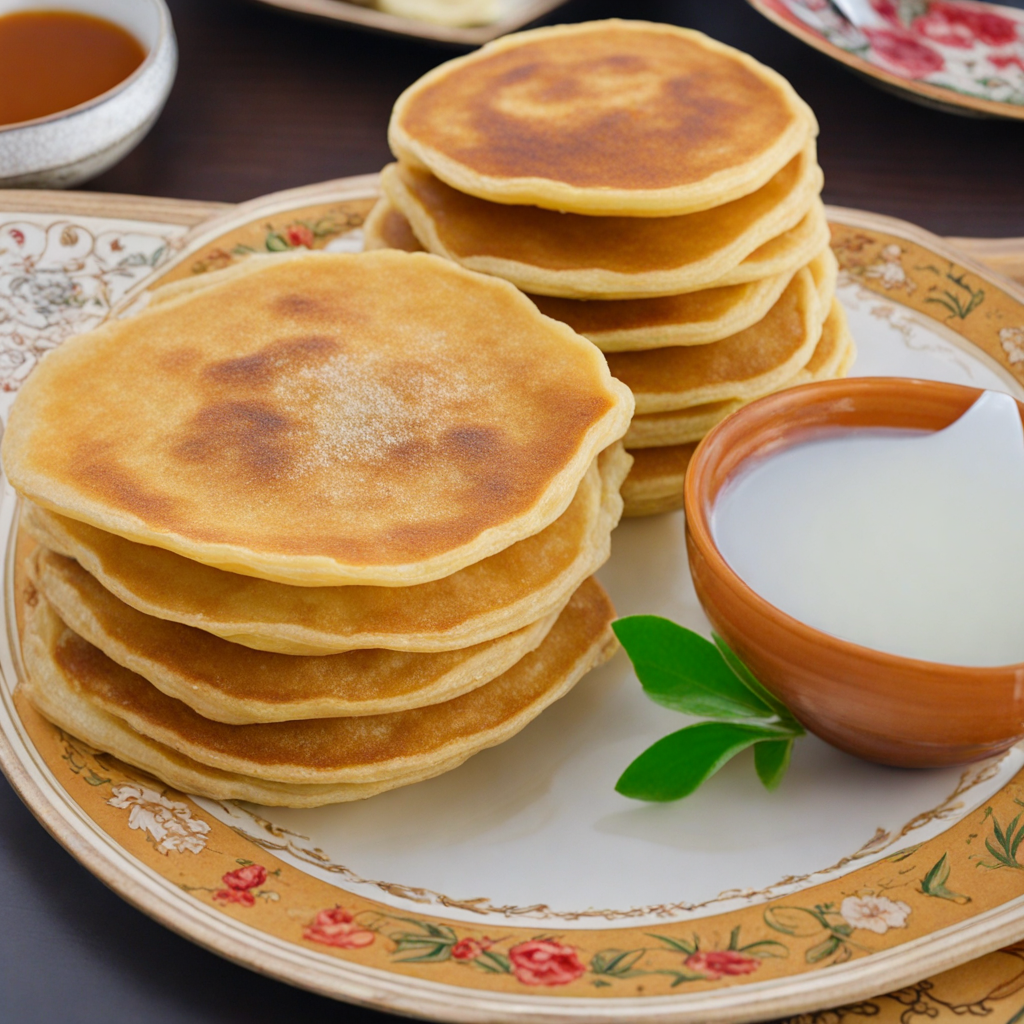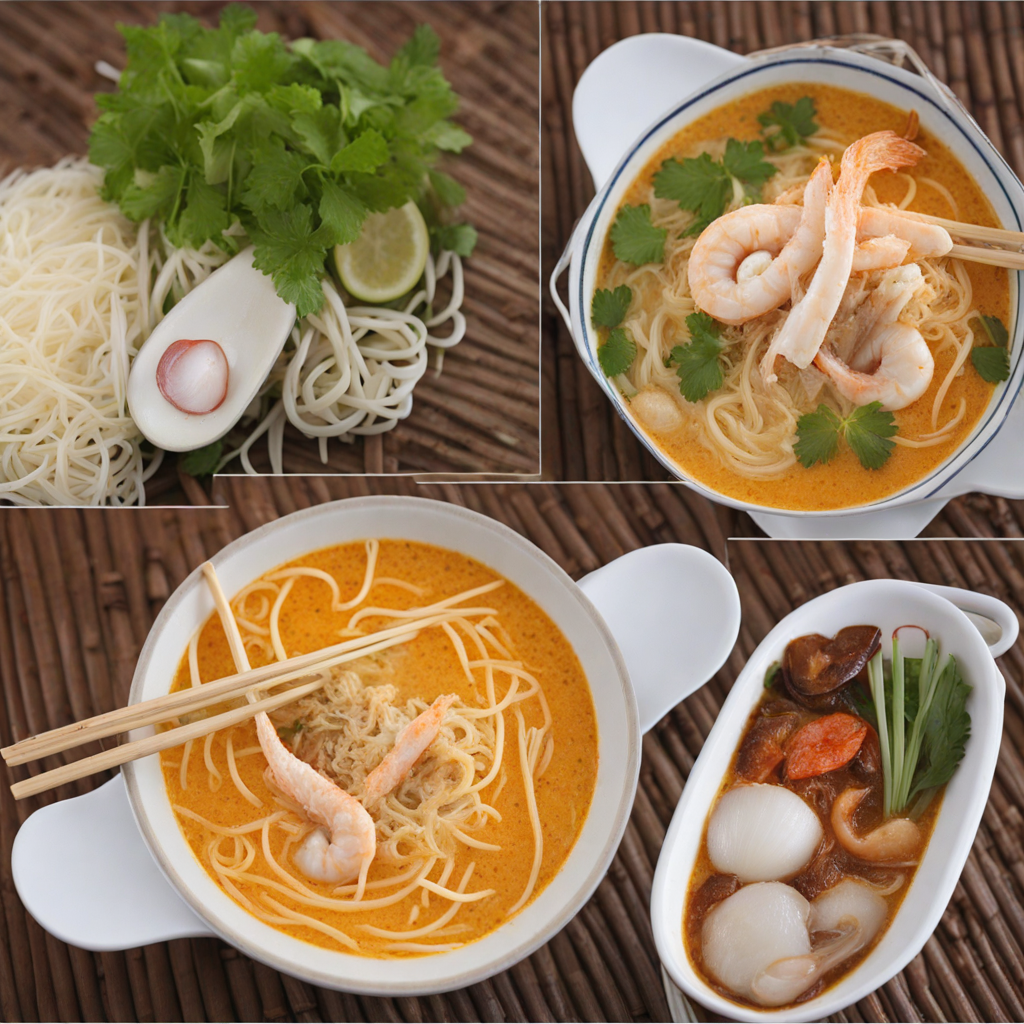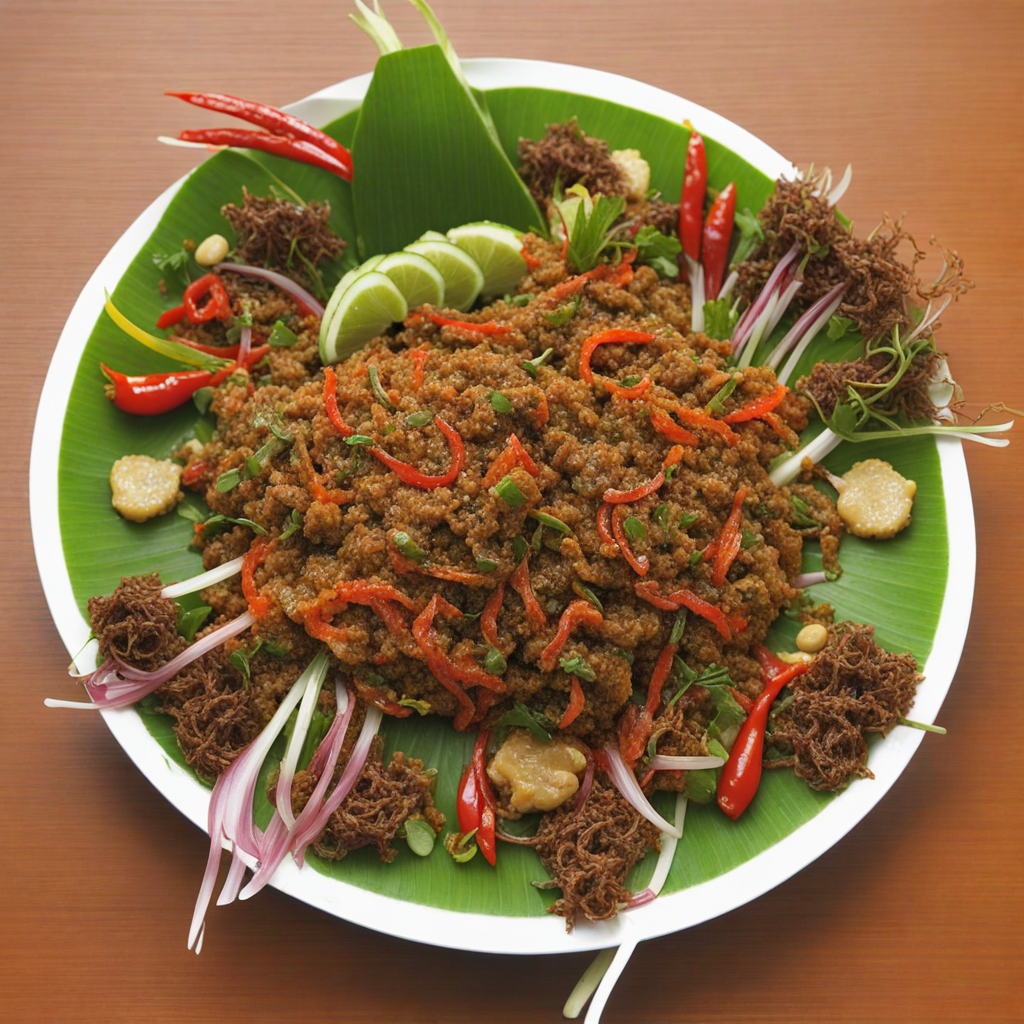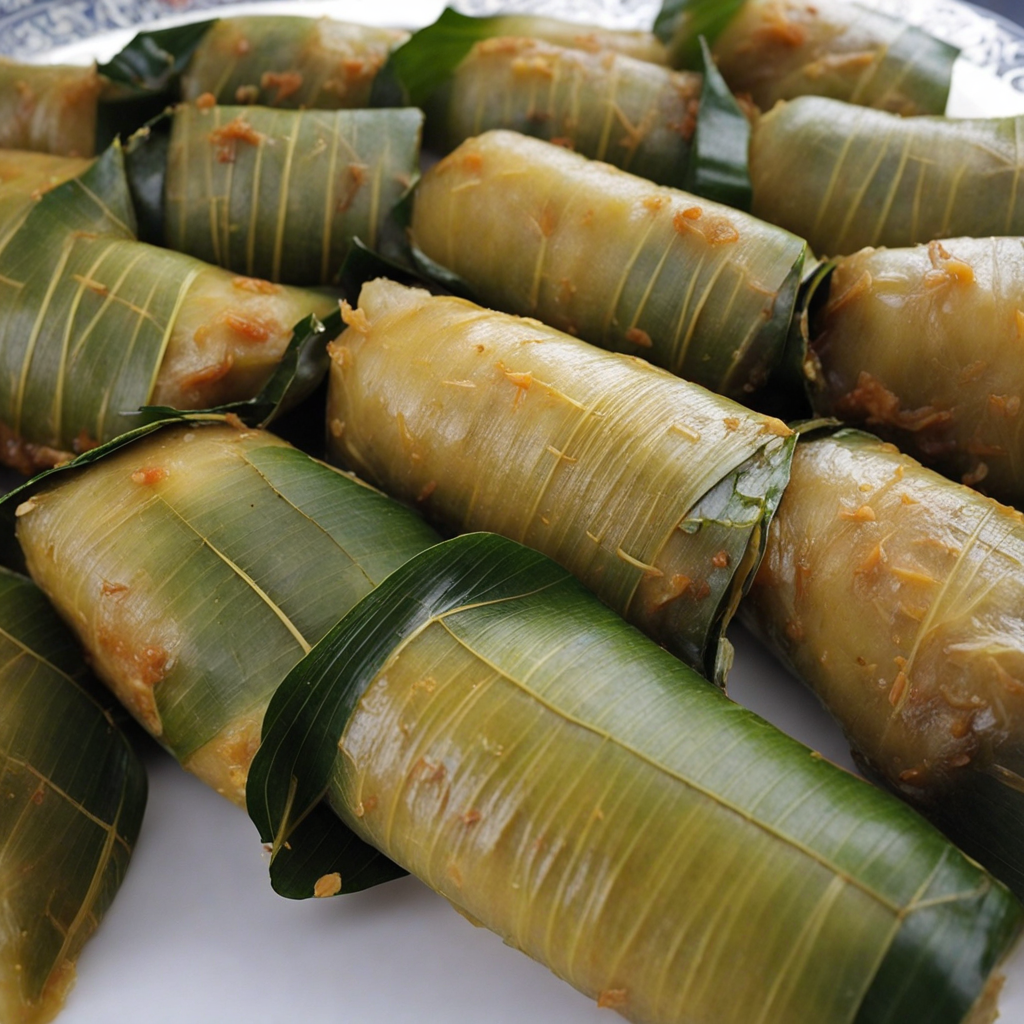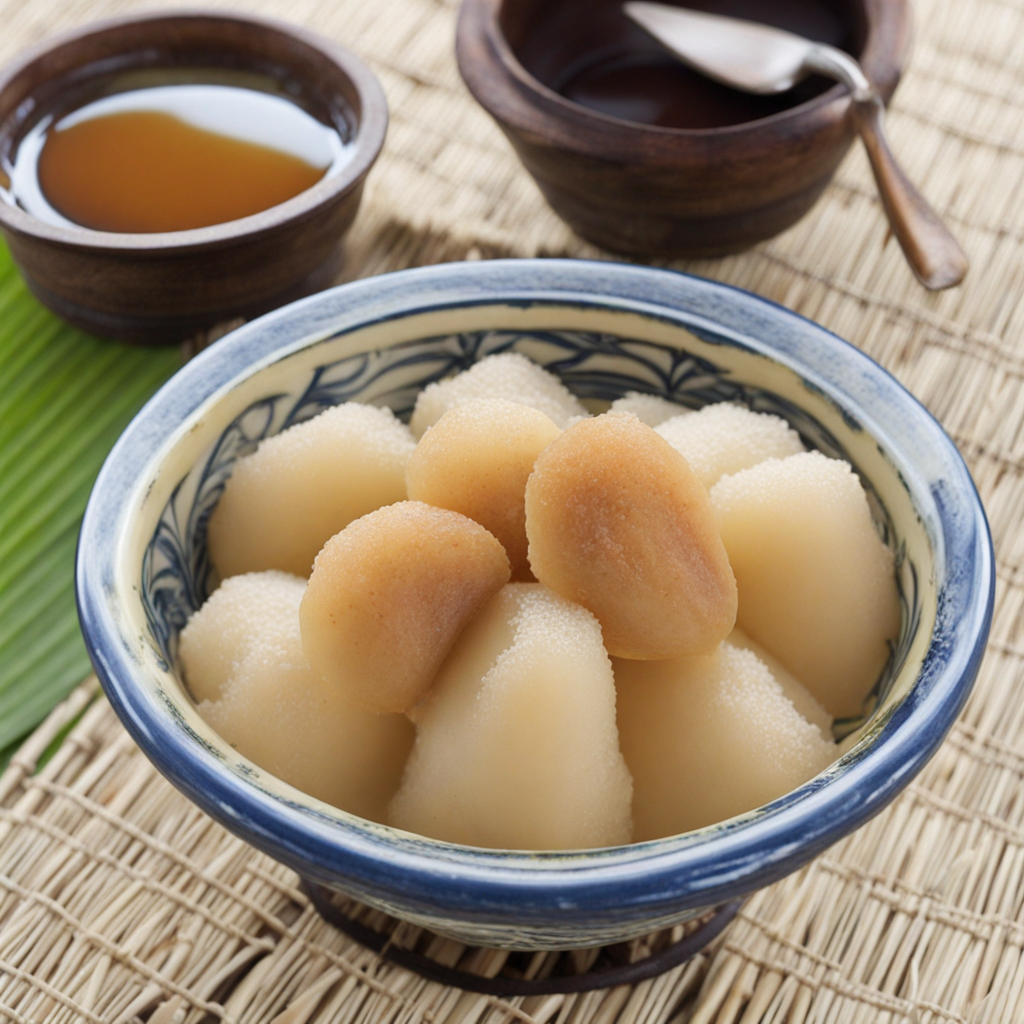Penyaram
Penyaram is a delightful traditional snack from Brunei, often enjoyed during festive occasions or as a popular street food. This sweet treat is made primarily from a mixture of rice flour, sugar, and coconut milk, which gives it a rich and creamy texture. The batter is typically flavored with pandan leaves, imparting a fragrant aroma and a hint of green color that makes it visually appealing. Once cooked, penyaram takes on a golden-brown hue, characterized by its crispy edges and soft, chewy center that creates a satisfying contrast in every bite. The cooking process of penyaram often involves pouring the batter into small, round molds, which are then placed over a charcoal fire or stovetop until they are perfectly cooked. The result is a slightly spongy and fluffy cake that is both sweet and savory, thanks to the natural nuttiness of the rice flour combined with the creamy richness of coconut milk. Often enjoyed warm, penyaram can be served plain or with a sprinkle of grated coconut on top, enhancing its flavor profile and adding an extra layer of texture. This delightful snack not only satisfies your sweet tooth but also offers a glimpse into Brunei's rich culinary heritage. Whether enjoyed as a quick snack or a festive treat, penyaram embodies the essence of Bruneian flavors, making it a must-try for those looking to explore new and exciting tastes. Each bite of this unique delicacy transports you to the heart of Brunei, inviting you to savor the simplicity and richness of its local ingredients.
How It Became This Dish
The History of Penang: A Culinary Jewel of Brunei Brunei, a small but culturally rich nation located on the island of Borneo, boasts a diverse culinary landscape that reflects its history and the influences of its neighboring regions. Among its many traditional foods, one dish stands out for its unique flavors and cultural significance: Penang, also known as 'Penyaram.' This delightful treat, deeply rooted in Bruneian culinary traditions, offers a fascinating glimpse into the region's history, cultural exchanges, and evolving gastronomic practices. Origins of Penang The origins of Penang can be traced back to the early Malay communities that inhabited the coastal regions of Borneo. The word 'Penyaram' itself is derived from the Malay language, which has a rich tradition of food that often blends local ingredients with influences from surrounding cultures, including Chinese, Indian, and indigenous practices. Penyaram is essentially a type of fritter made from a mixture of rice flour and sugar, which is then deep-fried to create a crisp outer layer that encases a soft, sweet interior. The dish has similarities to other Southeast Asian delicacies, such as the Filipino 'kueh' and the Indonesian 'kue cubir,' showcasing the shared culinary heritage of the Malay Archipelago. Cultural Significance In Brunei, food is not just sustenance; it is an integral part of social and cultural identity. Penyaram is often associated with celebrations, festivals, and communal gatherings. It is a popular snack during festive occasions such as Hari Raya, a significant holiday marking the end of Ramadan, where families come together to celebrate and share food. The preparation and consumption of Penyaram during these events serve to strengthen community bonds and preserve traditional culinary practices. The dish also has a nostalgic value for many Bruneians, often evoking memories of childhood and family gatherings. Street vendors and home kitchens alike produce this beloved treat, and its presence in both settings illustrates the dish's accessibility and widespread appeal. Its simplicity and deliciousness have made it a staple in the Bruneian diet, embodying the spirit of hospitality and warmth that characterizes the culture. Development Over Time As Brunei has evolved, so too has the dish of Penyaram. Historically, the ingredients used were locally sourced, reflecting the agricultural practices of the region. Rice, a staple crop, formed the basis of the dish, while sugar was derived from sugarcane grown in the area. However, as globalization has transformed food systems, access to a wider variety of ingredients has influenced how Penyaram is prepared. In contemporary Brunei, the traditional recipe has been adapted to incorporate modern cooking techniques and flavors. While the classic version remains popular, innovative cooks have begun experimenting with fillings and toppings, introducing elements such as pandan, coconut, and even chocolate. These variations showcase the creativity of Bruneian chefs and the willingness of the culture to embrace change while honoring its roots. Moreover, the rise of social media and food culture has brought increased visibility to Penyaram, allowing it to reach a broader audience beyond Brunei's borders. Food bloggers and influencers have highlighted this dish, creating a renewed interest in traditional Bruneian cuisine and encouraging culinary tourism. Visitors to the country are now more likely to seek out local delicacies like Penyaram, contributing to the preservation of the recipe and its promotion as a culinary treasure. The Role of Traditional Markets Traditional markets in Brunei play a crucial role in the production and consumption of Penyaram. These bustling hubs are filled with vendors selling an array of traditional snacks, and Penyaram is often featured prominently. The market atmosphere provides a sensory experience—aromas of fried delicacies, colorful displays of food, and the lively chatter of patrons create a vibrant tapestry of local culture. In these markets, the preparation of Penyaram is often on full display, with vendors skillfully frying the fritters in large woks. The sight of golden-brown Penyaram sizzling in hot oil is an enticing invitation for passersby. This public cooking method not only preserves traditional techniques but also fosters a sense of community as people gather around to enjoy the food together. Conclusion: A Culinary Legacy Penyaram, or Penang, is more than just a snack in Brunei; it is a culinary symbol of the nation's rich history and cultural identity. Its origins reflect the convergence of various influences that have shaped the region, while its evolution demonstrates the adaptability of traditional foods in a modern context. As Brunei continues to navigate the complexities of globalization, the preservation and celebration of dishes like Penyaram remain vital to the nation's cultural heritage. The dish serves as a reminder of the importance of food in fostering connections, preserving traditions, and celebrating community. As Bruneians gather to enjoy this delightful treat, they are not only savoring its unique flavors but also honoring the stories and histories that have made Penyaram a cherished part of their culinary legacy. Whether enjoyed at a festive gathering, a bustling market, or as a comforting snack at home, Penyaram continues to hold a special place in the hearts—and stomachs—of the people of Brunei.
You may like
Discover local flavors from Brunei


